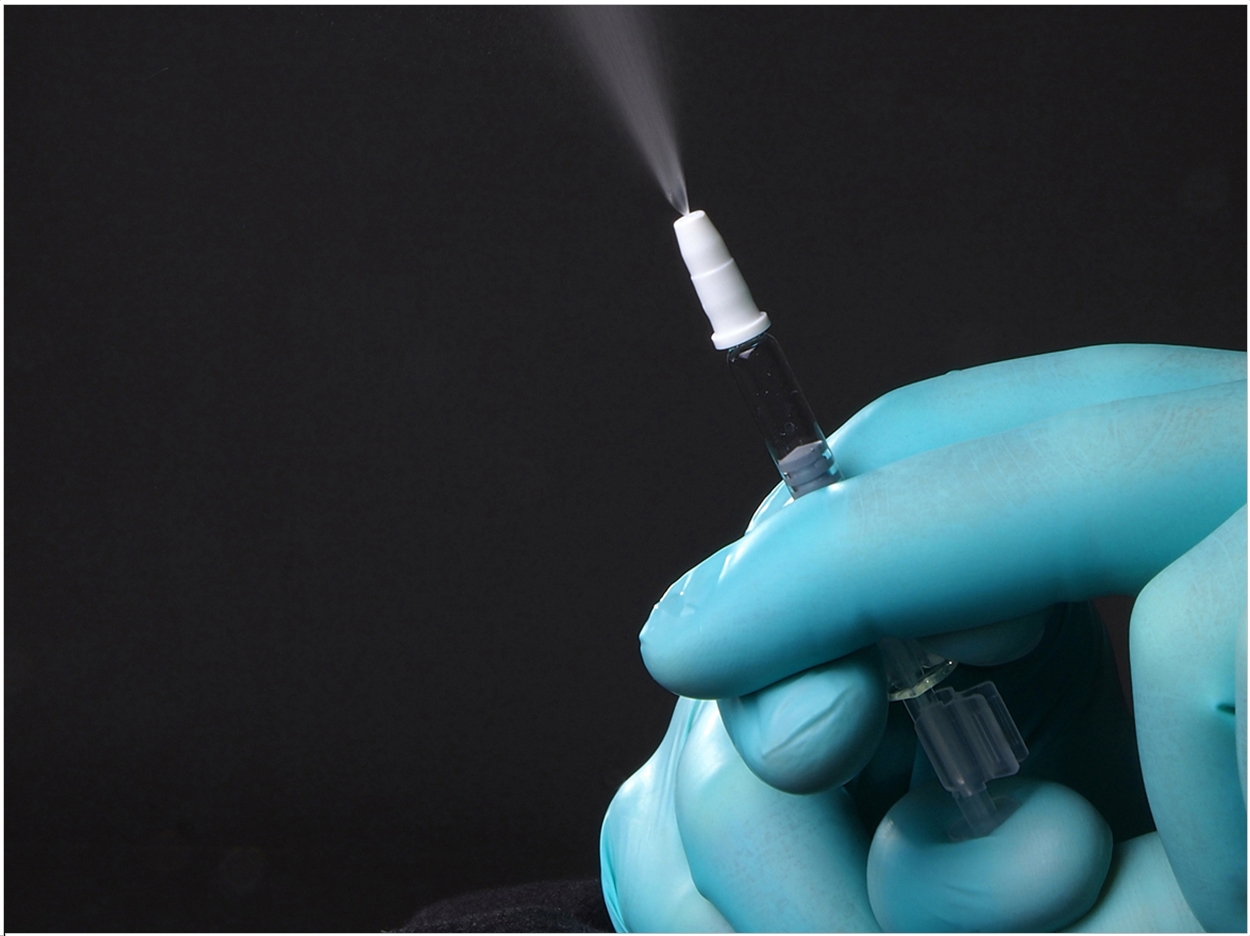
A nasal spray that could replace needle-administered anesthesia is safe and effective, according to researchers led by the University of Pennsylvania School of Dental Medicine following a Phase 3 clinical trial. The US Food and Drug Administration (FDA) had approved the spray, known as Kovanaze, for use in July as well.
“There is really nothing else like this out there,” said Elliot V. Hersh, DMD, MS, PhD, lead author and a professor with Penn’s department of oral and maxillofacial surgery/pharmacology. “This is obviously a great thing for needle-phobic individuals, and it can reduce inadvertent needle-stick injuries in the clinic as well.”
The double-blind, randomized trial found that Kovanaze effectively prevented pain during a single restorative procedure in an upper bicuspid, canine, or incisor in 88% of patients, which is comparable to the success of commonly used injectable numbing agents.
Developed by St. Renatus, Kovanaze combines the local anesthetic tetracaine and the nasal decongestant oxymetazoline. The most common side effects were runny nose and nasal congestion. No serious side effects were reported.
The idea for Kovanaze emerged with St. Renatus cofounder Mark Kollar, DDS, was hit in the chin playing basketball, requiring 21 stitches. A fellow player who happened to be an ear, nose, and throat (ENT) specialist placed the sutures and diagnosed Kollar with a deviated nasal septum.
The specialist also repaired the septum and later gave Kollar a nasal spray with tetracaine to remove a nasal stent. Once the stent was removed, Kollar noticed his teeth were numb. The ENT specialist said that other patients had reported the same sensation.
A practicing dentist, Kollar went to his office and tested his teeth with a dental electronic pulp stimulator and found that they indeed were numb. Kollar then cofounded St. Renatus with his business partner Jim Mulvahill.
However, the partners discovered that ENT specialist Bryan Clay, MD, already had a patent on an intranasal dental anesthetic. The 3 doctors then teamed up, with Kollar leading the formulation and scientific development. Kollar’s research also refined the anesthesia formula, yielding Kovanaze’s invention and additional patent protection.
The Phase 3 trial comprised 150 adults who had passed a health screening and were set to undergo a single dental filing in an upper bicuspid, canine, or incisor. Then, 100 patients were given Kovanaze, and 50 were given a placebo.
Patients received one spray, waited 4 minutes, and received a second spray, waited 10 minutes, and then a test drilling was performed. If the patients experienced pain at that point, they received a third spray. Patients who still experienced pain after that received a rescue injection of local anesthetic to complete the procedure.
The patients’ heart rate and blood pressure were recorded at various times throughout the visit, and the drug did cause a slight rise in blood pressure. Meanwhile, 88% of those who received Kovanaze were able to have the restorative procedure without a rescue injection, compared to 28% of those who had the placebo.
Before receiving the spray, all patients were given an alcohol sniff test to measure their baseline sense of smell. Repeating the test just after the procedure and again a day later showed that the drug caused minimal changes in olfaction. Some patients also reported nasal congestion, nasal discomfort, throat pain and irritation, headache, and eye watering, but no serious adverse events were reported.
St. Renatus will pursue additional investigations to see if more intensive dental procedures such as root canals and oral tissue biopsies could be performed with Kovanaze. Further studies also likely will evaluate whether the drug could be administered to children. Currently, the FDA has approved it for use in individuals weighing at least 40 kilograms, or about 88 pounds.
“It would certainly make for a more stress-free dental office visit for children as well as adults if we could replace some of these anesthetic injections with a simple spray,” Hersh said. “It may also keep some children out of the operating room, which would be a major cost savings to the child’s family and reduce potential morbidity associated with general anesthetic procedures.”
The study, “Double-Masked, Randomized, Placebo-Controlled Study to Evaluate the Efficacy and Tolerability of Intranasal K305 (3% Tetracaine Plus 0.05% Oxymetazoline) in Anesthetizing Maxillary Teeth,” was published in The Journal of the American Dental Association.
Related Articles
Nasal Spray Dental Anesthetic Gets FDA Approval
Single Anesthesia Dose Poses No Cognitive Danger to Children
Electricity Eliminates the Needle in Anesthesia Delivery












